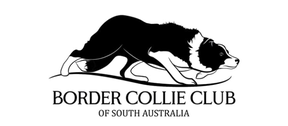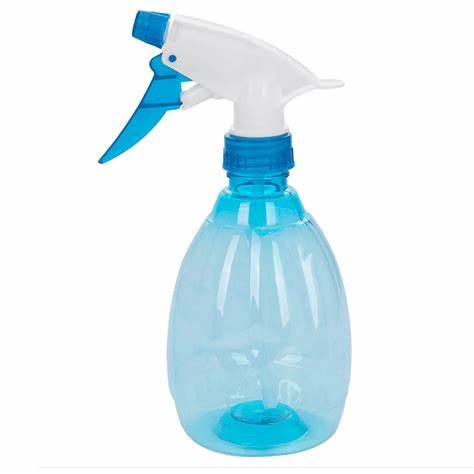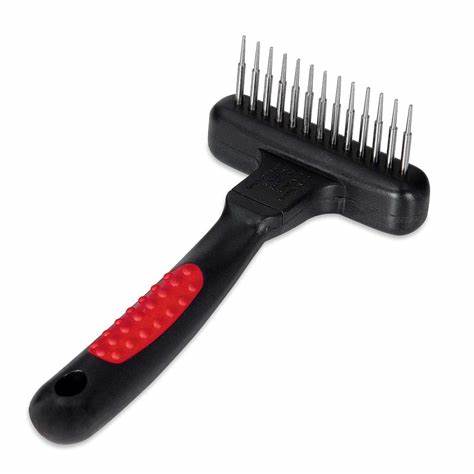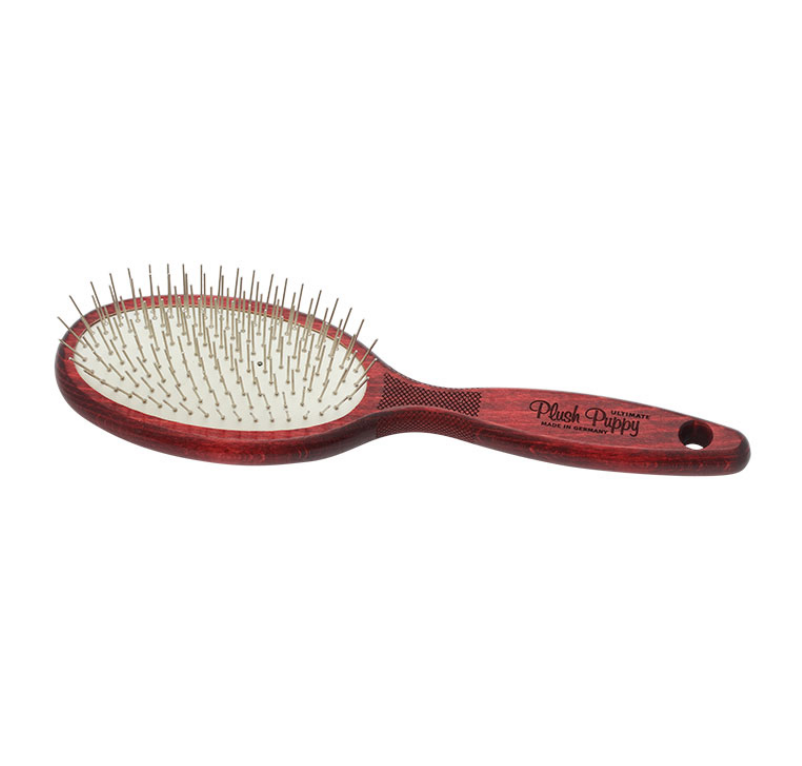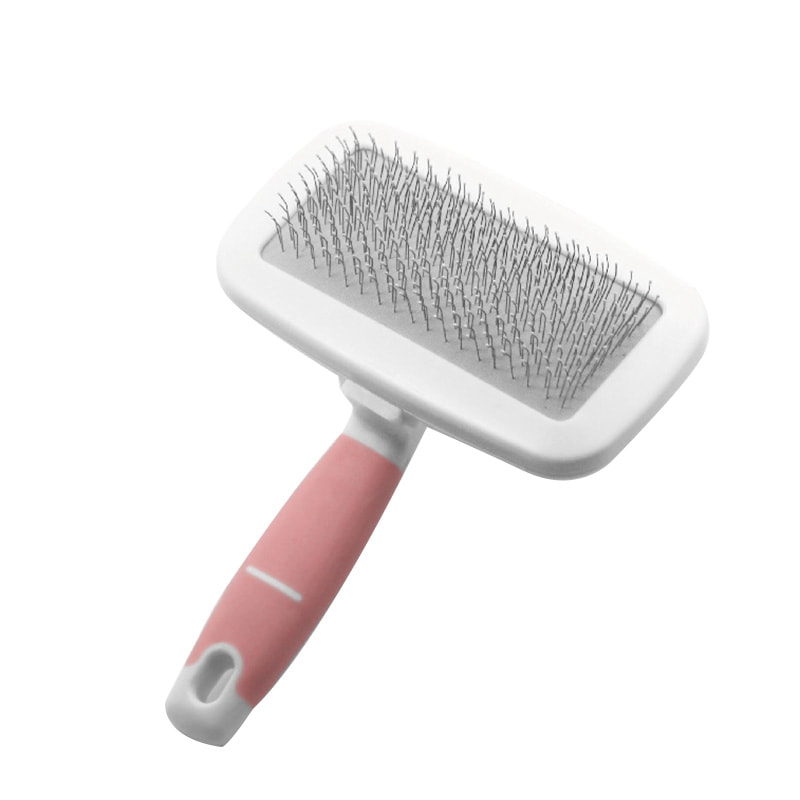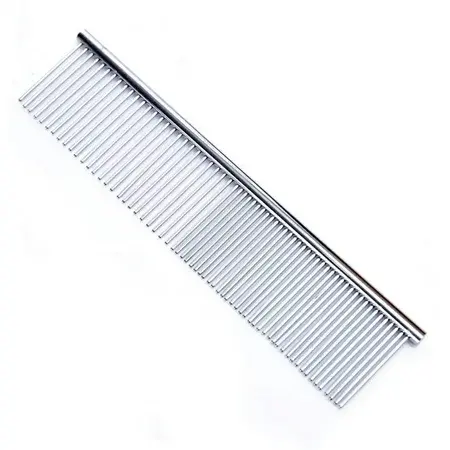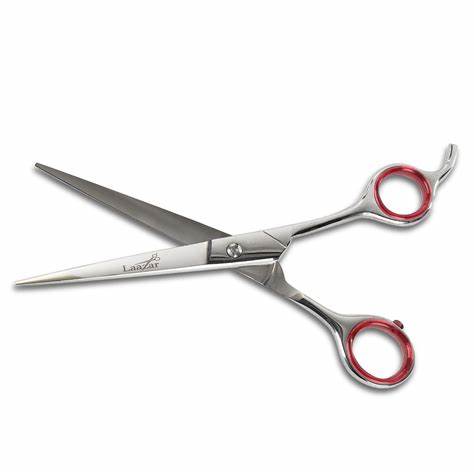BORDER COLLIE GROOMING

Border Collies coats may be smooth (short) or rough (moderately long) and in both forms provide great weather protection and insulation against the elements due to their structure as a 'double' coat, with a medium-textured topcoat and short, soft, dense undercoat. The topcoat is UV and water resistant, protecting the skin from the suns rays and preventing the undercoat from becoming waterlogged. The undercoat insulates against both heat and cold, shedding seasonally. In cooler months it is thicker, retaining heat and protecting the dog from getting too cold. In warmer months, the undercoat sheds and allows body heat to escape while cool air circulates next to the skin. When properly maintained, the double coat is your dog's best defence against the elements.
Both rough and smooth coats shed the same amount, however the rough coat is longer and therefore more noticeable when you start to find it on your furniture, clothes, food, children, neighbours.. you get the picture.
A quick brush weekly will keep on top of light shedding although this can be less frequent. Brushing may be required daily during seasonal sheds, at the start of summer and winter. Undesexed females also shed hormonally.
Pay particular attention to removing dead undercoat, and preventing matting in the very fine coat behind the ears, under the arms or at the base of the tail. You can choose to bath them frequently, or only when they are dirty or smelly. Their topcoats have a Teflon-like quality, where mud and dirt will often fall straight off as it dries. If you keep on top of brushing the coat will remain in good condition, however we have some tips and tricks below to help!
Both rough and smooth coats shed the same amount, however the rough coat is longer and therefore more noticeable when you start to find it on your furniture, clothes, food, children, neighbours.. you get the picture.
A quick brush weekly will keep on top of light shedding although this can be less frequent. Brushing may be required daily during seasonal sheds, at the start of summer and winter. Undesexed females also shed hormonally.
Pay particular attention to removing dead undercoat, and preventing matting in the very fine coat behind the ears, under the arms or at the base of the tail. You can choose to bath them frequently, or only when they are dirty or smelly. Their topcoats have a Teflon-like quality, where mud and dirt will often fall straight off as it dries. If you keep on top of brushing the coat will remain in good condition, however we have some tips and tricks below to help!
Shaving a Border Collie coat may seem like it would keep them cooler, given they can have such a heavy, thick coat. Due to the function of the double coat however, shaving your dog actually reduces their ability to stay cool and can even directly result in sunburn and overheating. A dog's skin is only 6 - 10 layers deep (compared to a human's 16 - 20 layers) meaning they burn even more easily than we do. The topcoat is designed to protect the dog's skin from harmful UV rays, and the best thing you can do to keep your dog cool is ensure you are regularly brushing out any dead or impacted undercoat, which will then allow air to circulate freely next to the skin. A shaved coat can also cause issues as it grows back, with the undercoat growing in more densely and at higher risk of impaction, meaning that grooming maintenance requirements increase and the dog being hotter.
Helpful Grooming Tips and Tools
There are plenty of dog grooming tools on the market, but these are the basics we regularly use and recommend for grooming a Border Collie. You can use all or a combination of various tools listed below - hover over each picture for an explanation of how they are best used.
Regular brushing is the key to coat maintenance. Knowing which brushes to use, when and on which part of the dog can greatly improve your (and your dog's) grooming experience. Repeat after us: never brush a coat when it is either dry or wet! Brushing a dry coat can pull and hurt the dog, be more prone to static making brushing more difficult, and cause breakage and split ends. Brushing a wet coat can also cause breakage, as well as make matts and tangles worse as they clump together more tightly. For maintenance brushing, use a grooming spray or create your own with water and a dollop of conditioner to lightly mist over the coat before brushing. For brushing following a bath, use a pin brush during blow drying and then use a grooming spray to finish.
When it comes to bathing your dog, use good quality dog products - many of our members who show their dogs use Plush Puppy professional grooming products however the most important thing is to ensure that the shampoos and conditioners you are using are appropriate for your dog's skin and coat, and that you are drying them effectively.
A proper dog dryer is an absolute game changer - whether you invest in one for home, take your dog to the groomer regularly, or even drop into one of the DIY dog washes nearby (we recommend for a planned trip that you take your own good quality shampoos and conditioners and just use their water and the dryer however the DIY Wash can be a lifesaver sometimes regardless), nothing beats a force dryer for results with lifting dead coat, drying through to the skin and making the brushing process MUCH easier.
Regular brushing is the key to coat maintenance. Knowing which brushes to use, when and on which part of the dog can greatly improve your (and your dog's) grooming experience. Repeat after us: never brush a coat when it is either dry or wet! Brushing a dry coat can pull and hurt the dog, be more prone to static making brushing more difficult, and cause breakage and split ends. Brushing a wet coat can also cause breakage, as well as make matts and tangles worse as they clump together more tightly. For maintenance brushing, use a grooming spray or create your own with water and a dollop of conditioner to lightly mist over the coat before brushing. For brushing following a bath, use a pin brush during blow drying and then use a grooming spray to finish.
When it comes to bathing your dog, use good quality dog products - many of our members who show their dogs use Plush Puppy professional grooming products however the most important thing is to ensure that the shampoos and conditioners you are using are appropriate for your dog's skin and coat, and that you are drying them effectively.
A proper dog dryer is an absolute game changer - whether you invest in one for home, take your dog to the groomer regularly, or even drop into one of the DIY dog washes nearby (we recommend for a planned trip that you take your own good quality shampoos and conditioners and just use their water and the dryer however the DIY Wash can be a lifesaver sometimes regardless), nothing beats a force dryer for results with lifting dead coat, drying through to the skin and making the brushing process MUCH easier.
Avoid using undercoat or de-shedding brushes with blades marketed towards long or double coated breeds - despite their popularity, the blades can cut and damage the topcoat.
Regular grooming with the above brushes will maintain a healthy coat.
Regular grooming with the above brushes will maintain a healthy coat.
Show Grooming Demonstration
Nail TrimmingMost dogs will need their nails trimmed - if you can hear their toenails tapping when they walk, they are likely too long.
You can book them in for a trim at the vet or groomer, or do it (carefully) yourself using nail clippers, filing them back with an emery board or pet nail grinder, or teach them to use a scratch pad to file their own nails. Use lots of treats and desensitise your dog from the time they are a puppy to having their paws touched and trimmed, and their nails clipped. |
Grass Seeds
Grass seeds are one of the most common veterinary presentations, particularly during late Spring and early Summer.
They have sharp, spear-like tips which burrow into skin. Their feather-like barbs then keep on burrowing forwards - they can not go backwards. They are difficult to locate once they have penetrated the skin and cause pain, inflammation and infection, which can be fatal.
SYMPTOMS
Swelling, inflammation, a blister on the skin, missing fur, a wound or discharge.
Excessive licking or chewing at the area.
Violent sneezing, pawing at or discharge from the nose.
Consistent head shaking or tilting the head to one side.
Squinting, pawing at or discharge from the eye.
GRASS SEED MANAGEMENT
Avoid walking or exercising in public areas with grass seeds present.
Regularly weed or maintain your own property.
Thoroughly and regularly check both by sight and by feel your dog's ears, nose, chest, genitals, under their arms, on their belly and in between their toes.
Keep feet trimmed particularly during grass seed months to avoid picking grass seeds up and assist with inspecting feet.
If you see any of the above symptoms or suspect a grass seed, consult your vet.
© Border Collie Club of South Australia Inc. 2025
